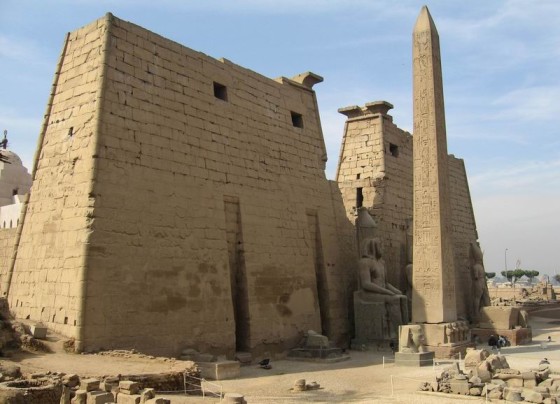
The Temple of Luxor will always attract tourist attraction. It still has that mystery about it that is associated with all thing ancient Egyptian. Located in Thabes which was in ancient times called Waset and was the capital of the Egyptian empire in the 12th century.The huge temple complex runs parallel to the Nile and was built by the legendary pharaoh King Amenhotep III who reigned 1390-53 BC. He dedicated it to Amon Re,his companion Mut and sons Khons. The temple has been held in reverence by the Egyptians throughout the ages and is still a popular worship site here. The structure and complex of the temple was further expanded by Tutankhamun and Horemheb. You will also see a granite shrine here which is dedicated to Alexander. In the Christian era the temple’s hypostyle hall was converted into a Church. For thousands of years after that the popularity of the temple waned away and people forgot that there was a temple here initially. It lay hidden beneath the present day streets and houses of Luxor. A mosque of Sufi Shaykh Yusuf Abu al-Hajjaj was also constructed over it.

Luxor temple was known as ‘Ipet-res by the ancient Egyptians as it was the main point for the Opet festivities in Egypt. The earliest remains that have been found here dates to the Dynasty XIII of the Egyptian civilization chronology. The temple gained more prominence in the Dynasty XVIII. Presently tourists enter the temple through the western gate and come to see the massive first pylon, which is 21m high. This was a later addition by Rameses II. On its outer face the pylon has battle poems written all over.
From ancient Egyptian records we come to know that festivals and rituals were a major part of the Egyptian lifestyle. The festival of Opet was celebrated from The Temple of Luxor. It lasted differently in the different reigns of kings. For instance it continued for eleven days during the 18th Dynasty while twenty seven days in the reign of Ramesses III. A huge distribution of foods, drinks and other other goodies took place during the festivities in the temple. Procession by the Royal family began in Karnak ending in the Royal temple of Luxor. Therefore the significance of the temple was huge to generations of Pharaohs.
Some of the architectural features of the temple are worth noting down. There are more significance to them then that meets the eye. Some of the features again are totally religious or ritualistic rather than utilitarian. Others are constructed to commemorate a great figure or the Egyptian Gods.The Great Pylon of Ramases for instance is a pathway that exhibits human headed sphinxes in all shapes and sizes. It was erected by Necatnebo I. This ancient way is said to have connected the Luxor temple with the Karnak temple.It has huge seated statues of Rameses II guard the gateway. Originally there were two obelisk as well but now only one remains the other displayed in Museum of Concorde in Paris. There is also a great Court of Rameses II which is 168 feet wide. Seventy four columns supports it . A shrine lies on the farthest side of Thutmose III. Names of great Egyptian kings were inscribed on the hall like Tutankhamun, Horemheb, Seti I, Rameses II and Seti II. The Eastern walls were decorated by Tutankhamun. Unfortunately Horemheb who came later erased his name and inscribed his own so that posterity remembers him. The sacred boats of the Theban triads were brought here first and then sent to the Karnak temple. Court of Amonhotep III with its papyrus columns was the actual entrance of the temple. This leads you directly to the Hypostyle hall which was also known as the hall of appearances.